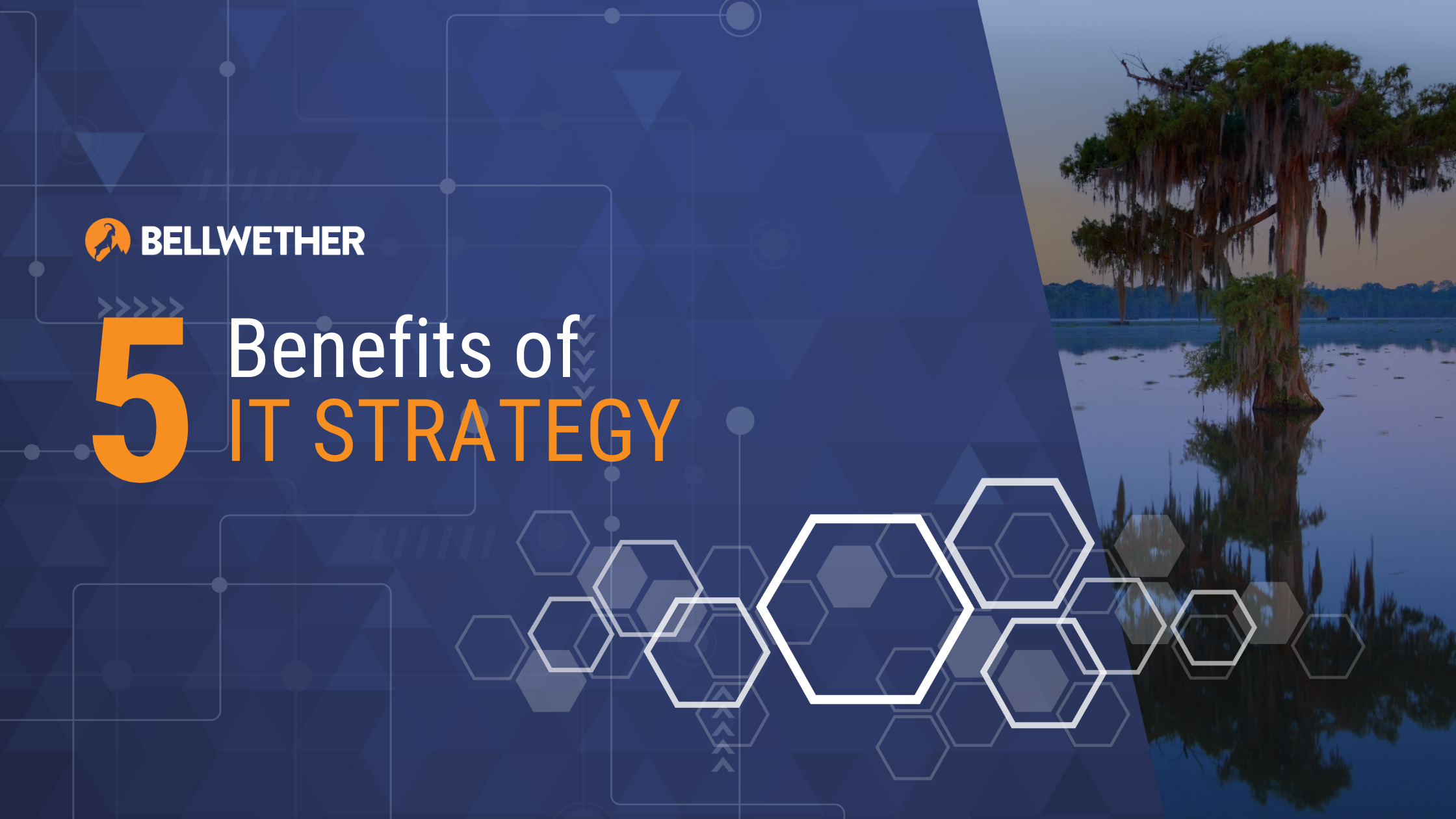
The starting place for technology strategy is a mindset. It’s an awareness that IT is more than just overhead, an awareness that IT is not only integral to keep business operations humming along, but that it can be used to move the business forward.
While technology strategy includes the utilization of best practices to create and scale high functioning IT systems, there is no cookie cutter template that you can use to create IT strategy. Strategy sets out a path to take you from where you are today, to where you want to go tomorrow and that’s unique for every organization.
It will be evident if you don’t have a tech strategy. When you don’t have a strategy, you’ll feel like you’re spinning your wheels. Your IT team might be great at fixing but they’re not great at identifying the new technologies that you need to adopt to better manage cyber threats or gain a competitive edge. In fact, you might even be hesitant to try anything new because previous attempts to adopt new technology ended up with lackluster results, or even disaster.
The reason why so many small businesses haven’t mastered technology strategy is because they don’t have an experienced guide to show them the way.
vCIO Sits at the Strategy Table
IT strategy is led by clear goals and priorities and that’s why IT needs a place at the strategy table. That chair should be occupied by a Chief Information Officer (CIO) or vCIO (v is for virtual) who acts as a consultant. A vCIO is knowledgeable about both technology and business. This person is the strategy guide.
Your vCIO is familiar with your IT architecture and is involved in strategic planning conversations. They work with you to create a high level IT plan that maps out what you need to do to establish a firm technology foundation and support business goals. Then they create a technology strategy document to plan out how you can use technology to meet specific objectives.
Related: IT Not Serving Your Business? It’s Time for Managed IT Services
Benefits of Technology Strategy
Whenever you can move out of the tactical headspace for a moment and think strategically, you have the opportunity to make changes that have lasting impact. Let’s consider a few of the benefits of technology strategy to see what that impact looks like.
1. Confident Decisions About Technology Investments
Technology is evolving quickly and there are lots of options available to businesses. It’s easy to get your hands on the latest tech tools but many business leaders have had bad experiences when adopting new technology – experiences that could have been avoided if they had been more strategic with their investments.
When you practice technology strategy, your vCIO works alongside you to vet modern technologies. They ask the questions that you don’t know to ask so that you can get the outcome that you expect and avoid pitfalls that could create negative ripple effect throughout your organization.
Being strategic allows you to keep the bigger picture in mind, so that taking one step forward doesn’t land you two steps back. When you aren’t worried about failure, you can make confident decisions about how you’ll invest in technology.
2. High Functioning IT Systems
Technology strategy allows you to proactively manage your IT systems so that they’re predictable. If you don’t have high functioning IT systems, the first thing your vCIO is going to do is to map out the improvements you need to achieve that.
Your improvement plan will likely have some hardware and software updates, and recommendations for how to use cloud services, but you’ll also need to change some common behaviors like waiting too long to refresh equipment.
IT best practices for updating and patching software are vital to the security and function of your IT systems. This part of IT strategy involves the consistent application of best practices and creates the foundation on which you can scale and leverage IT for growth, improvement, and innovation.
3. Effectively Manage Cyber Risks
Cybersecurity is essential to business success and should be an ongoing topic in technology strategy discussions. Your vCIO should always be thinking about security, whether you’re talking about helping employees be more productive or moving your infrastructure to the cloud.
Cybersecurity strategy changes with evolving threats, and your vCIO will bring recommendations that will prevent you from falling behind, and expose you to more risk than you want or need.
Having regulatory compliance requirements or highly visible executives will change your risk profile, and your security strategy should accommodate. In the case of compliance, your vCIO should be able to help you to interpret regulations into a security framework that checks all the boxes for achieving compliance as well as risk management.
No security strategy is complete without an incident response plan, and a data backup and recovery plan that enables you to get back up and running as soon as possible. Cybersecurity awareness training and cyber insurance are also must-have layers that businesses need in their security strategy.
Related: Cybersecurity Basics: 12 Essential Layers You Can’t Ignore
4. Productive (and Happy!) Employees
If you want your employees to be more productive, first provide a high functioning, secure IT system, then work with your vCIO to find innovative ways to use automation to streamline processes and remove manual steps. This is where your vCIO will really dig into the weeds about how your people do their work and ask the questions that uncover opportunities where technology can help people get more work done in the same amount of time.
Providing a great technology experience for your employees is a win-win situation. On the employee side, your people are equipped with the tools they need to do their jobs. They’re not slowed down or frustrated by technology that doesn’t work and they’re setup to be responsive to customer needs. On your end, employees are productive and making customers happy.
5. Serve Your Customers Better
When it comes down to it, all of the benefits of strategic planning just mentioned enable your company to serve your customers better and reap the benefits of innovative technology. When your technology works, your data is secure, and your people have the technology tools they need to do their jobs, you’re set up to deliver great customer experiences, but wait… there’s more.
You can use IT strategy to make your customer experience even better when you find technology solutions that allow you to become even more responsive. We’re talking about things like streamlining processes with automation, increasing visibility with real time information, or improving how you collaborate. This is how strategic use of technology becomes a competitive advantage.
Related: Learn how IT can enable operations with our Guide to Managed IT Services
Who Sits in the IT Strategy Chair for You?
If IT is an afterthought and not an integral part of your business strategy, it’s probably because you don’t have a guide to point the way and guide you down the right path. Here at Bellwether, all of our clients receive vCIO services so that technology does have a place at the strategy table. The outcome is that the ROI that they get from IT is measured in improved business results.
If that’s not what you’re getting right now, it’s time to explore your options. Don’t wait until something bad happens (like a cyber incident or losing your biggest customer) before you decide to make a change.
Contact us for a free IT assessment.
